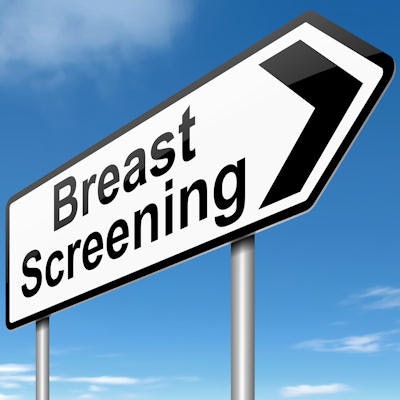
The American College of Physicians (ACP) has shifted its guidance on breast screening to a more conservative approach. The ACP is now recommending that women should start breast cancer screening at the age of 50, not 40, and attend every other year, according to new guidance published April 8 in the Annals of Internal Medicine.
The ACP's position is a change from its 2015 guidance, which advised average-risk women with no symptoms of disease to start biennial screening at age 40, and is in line with the current U.S. Preventive Services Task Force (USPSTF) recommendation. According to the ACP, when compared with annual screening, biennial mammography screening shows no significant difference in breast cancer mortality and reduces screening harms: Women screened yearly receive more abnormal results that are not actually cancer compared with those screened every other year (7% versus 4.8%).
"These false-positive findings result in biopsies and surgeries that would otherwise not have been necessary," the ACP said.
The organization does state that women between the ages of 40 and 49 should be in discussion with their doctors about breast cancer screening, as should those who are at higher risk due to prior abnormal screening results or genetic mutations.
"Beginning at age 40, average-risk women without symptoms should discuss with their physician the benefits, harms, and their personal preferences of breast cancer screening with mammography before the age of 50," ACP President Dr. Ana María López said in a statement.
The ACP also noted that women of average breast cancer risk who are 75 years and older, or those with a life expectancy of 10 years or less, should discontinue breast cancer screening. Finally, it suggested that in average-risk women of all ages, physicians should not use clinical breast exam to screen for cancer.
For this update, the group reviewed guidelines from the American College of Radiology (ACR), the American Cancer Society (ACS), the American College of Obstetricians and Gynecologists (ACOG), the Canadian Task Force on Preventive Health Care (CTFPHC), the National Comprehensive Cancer Network (NCCN), the USPSTF, and the World Health Organization (WHO).
Critical response to the new recommendation was swift. Immediately after it was released, the ACR and the Society of Breast Imaging (SBI) expressed concern in a statement, warning that the new approach may result in thousands of additional and unnecessary deaths from breast cancer each year.
What's 'average'?
In an editorial that accompanied the recommendation, Dr. Joann Elmore of the University of California, Los Angeles and colleague Dr. Christoph Lee of the University of Washington in Seattle listed several concerns, from the conflicting definitions of "average risk" to how discussions between women and their care providers actually happen.
For example, existing breast cancer screening guidelines vary when it comes to defining "average risk," and the implications of "average" differ depending on perspective, Elmore and Lee wrote.
"The ACP considers women with dense breast tissue on mammography and no other risk factors to be at average risk," they wrote. "However, when the average risk of dense breast tissue is combined with other risk factors that also indicate average risk in isolation ... a woman may no longer be at average risk."
Regarding discussions between women and their primary care providers about breast cancer screening, Elmore and Lee pointed out that this is easier said than done, citing inadequate time for such detailed conversations during typical clinical visits. They also addressed the fact that clinicians have little concrete direction about how to talk with older women about stopping screening, despite the growing presence of screening statements advocating for such conversations.
"Unfortunately, missing from these guidelines is advice on how clinicians should go about deimplementation," the two noted. "We need reliable ways to determine life expectancy given comorbid conditions, as well as methods to appropriately manage the discussion about stopping screening."
Crossroads of confusion
The ACP's guidelines may not ultimately offer more clarity for women and their providers on breast cancer screening, Elmore and Lee concluded.
"At this crossroads of confusion, we need a clear path toward informed, tailored, risk-based screening for breast cancer," they wrote. "Until we have automated, technologic solutions that assess risk status and validated practices for having difficult conversations about informed decision-making, physicians are left to use their best judgment based on available research and expert recommendations. The ACP guidance statements shed light on these points but do not clearly illuminate the full path ahead for every woman."




















